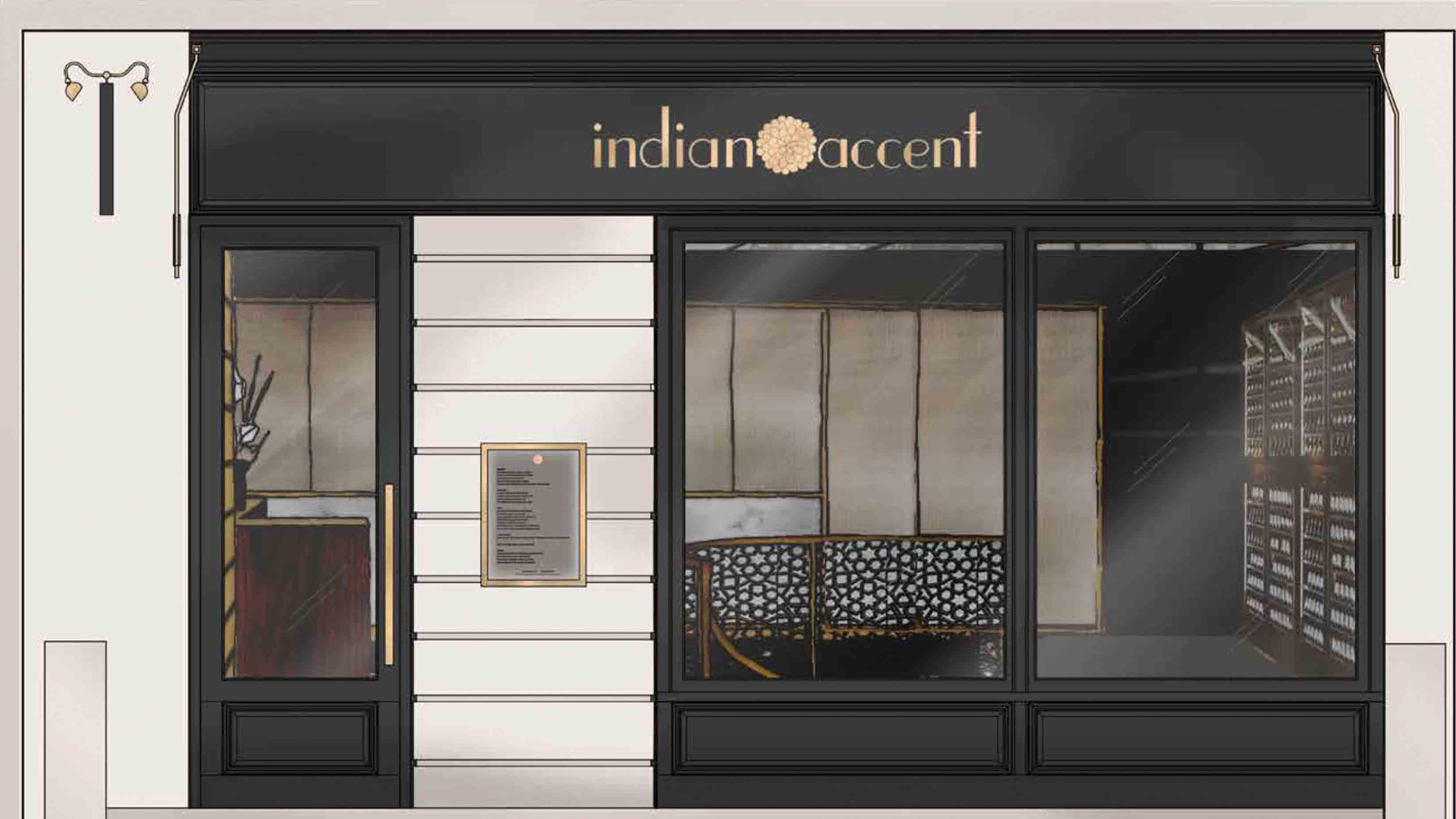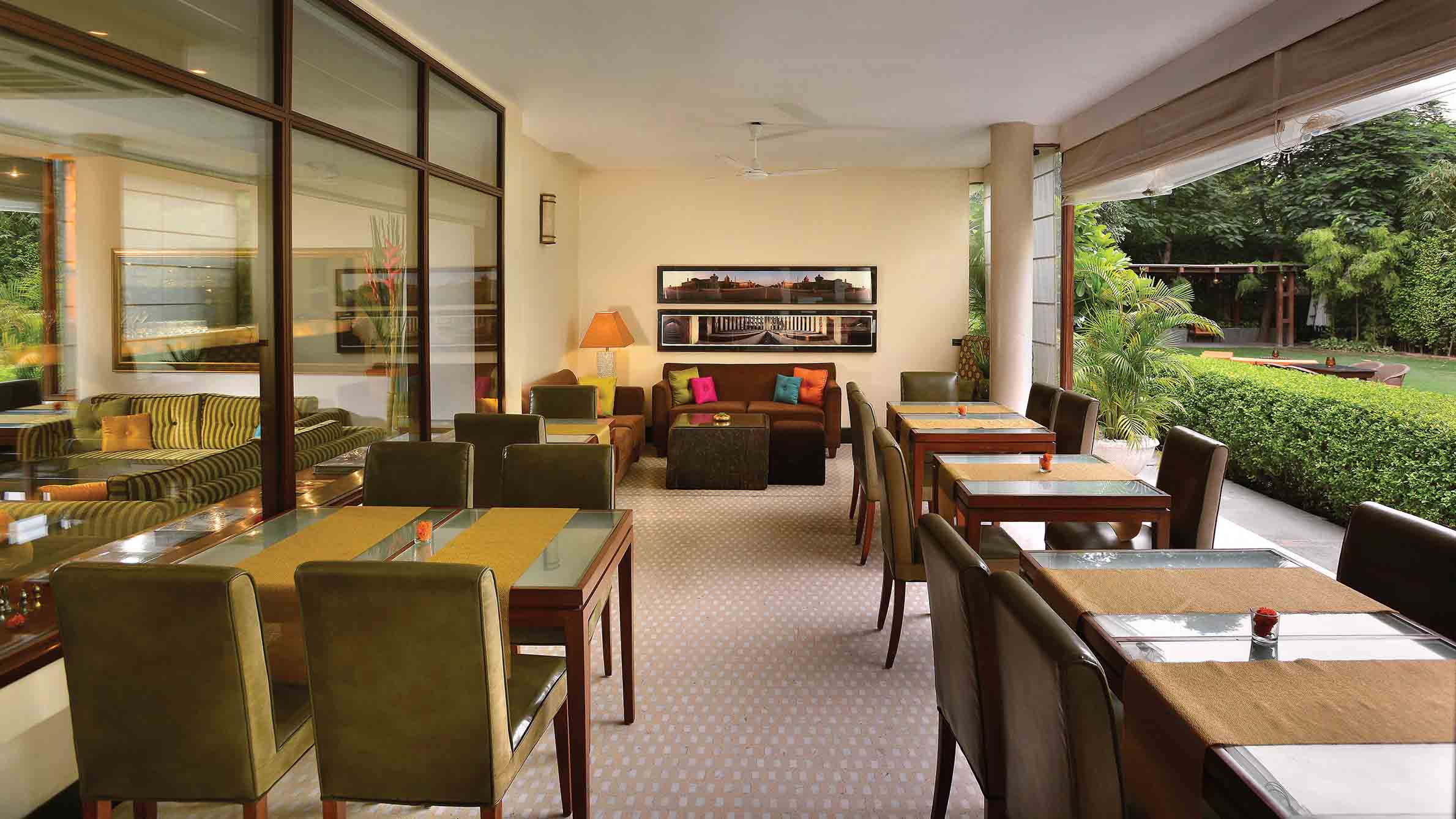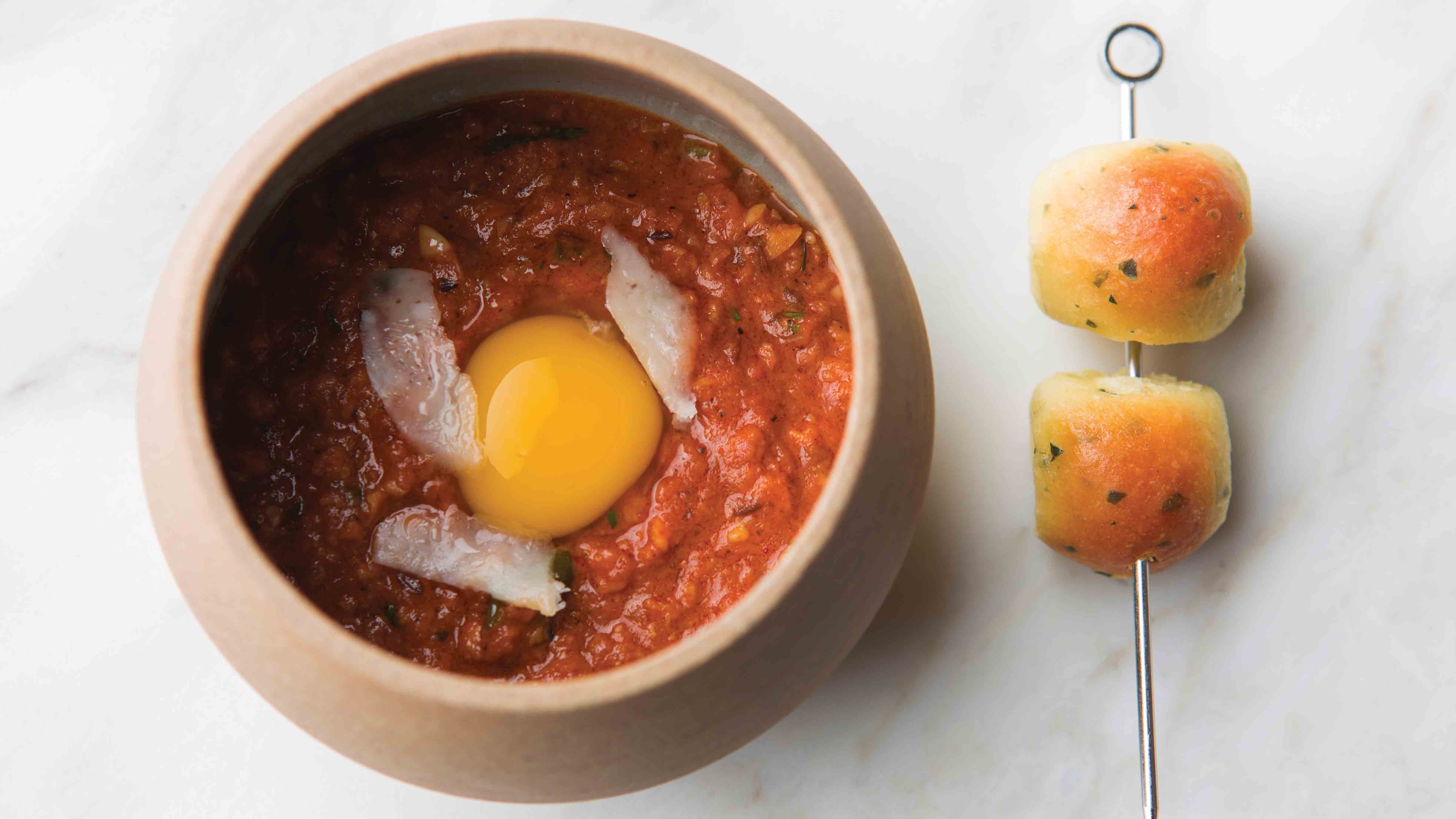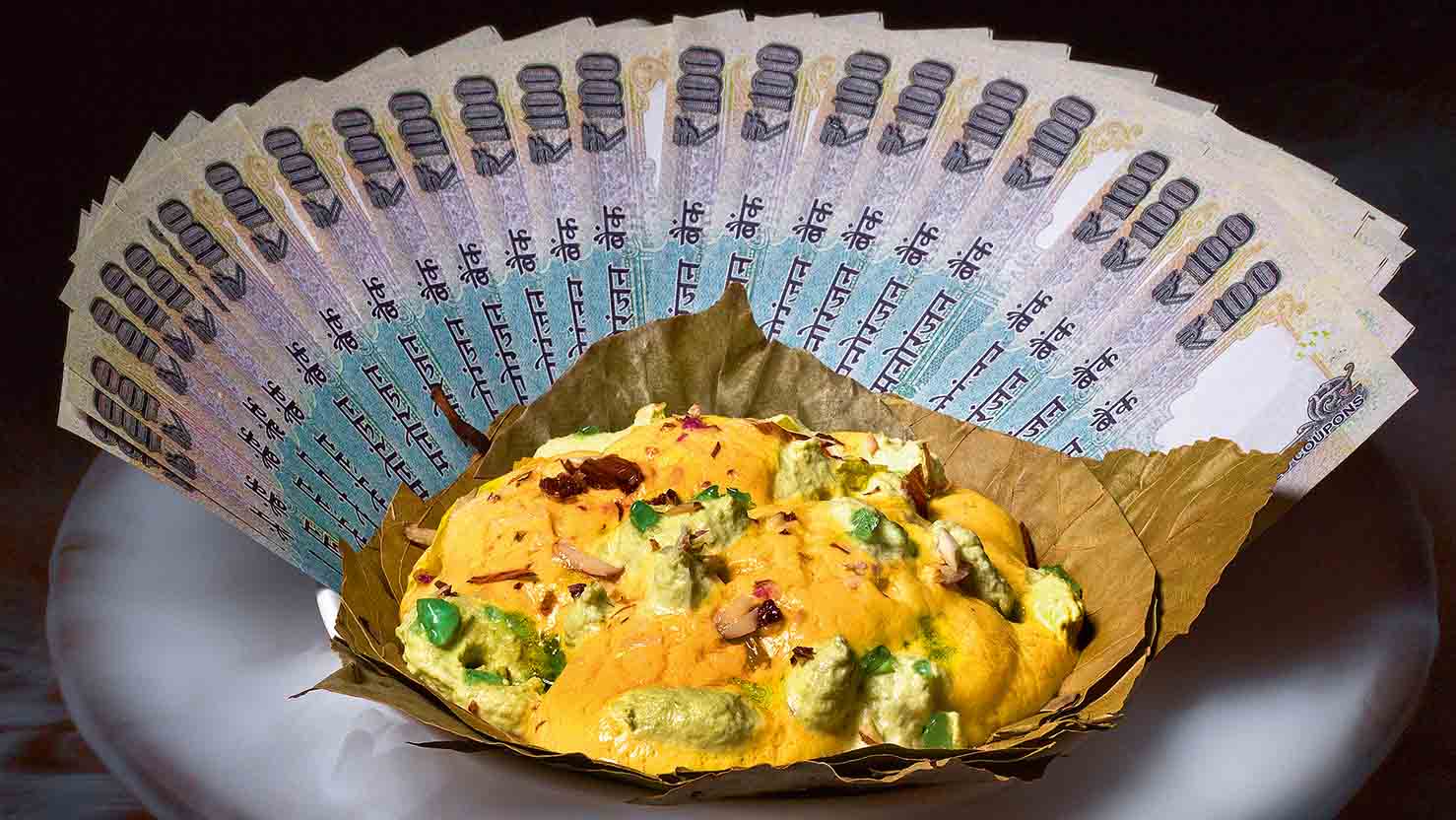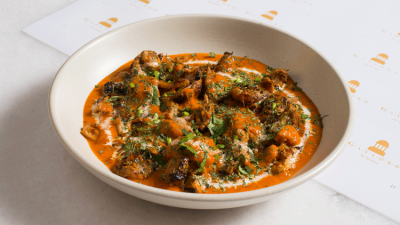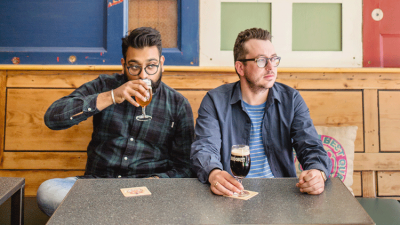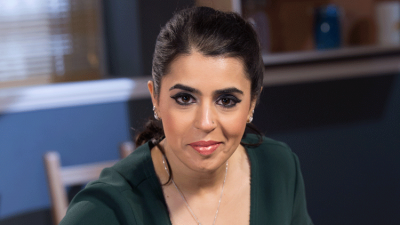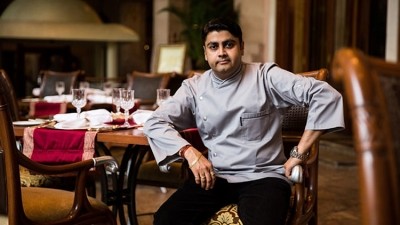Rohit Khattar: "The dishes we will serve are different to that of any other Indian restaurant in the UK"
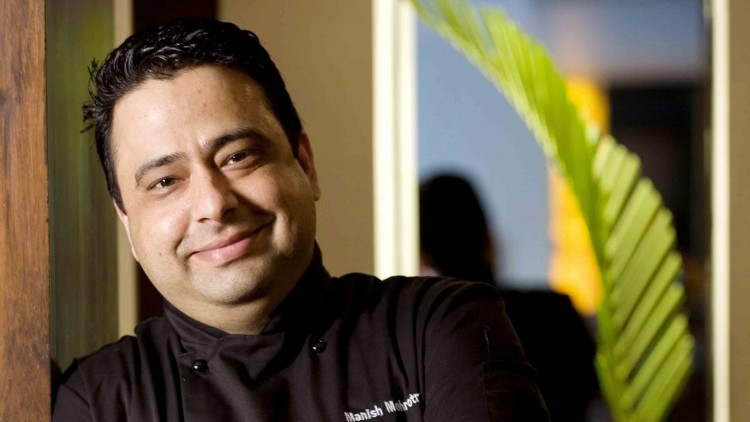
Forget Brick Lane with its cereal cafés and graffiti walking tours, London now has an alternative and rather more salubrious curry mile in Mayfair, although those hoping to neck cooking lager, smash a chicken and prawn bhuna and leave with change from a £20 note will be sorely disappointed. The majority of the capital’s high-end Indian restaurants are now clustered around Berkeley Square and Albemarle Street to the south-east. The area has been a hotspot for starred and star-seeking Indian restaurants for some time (long-term residents include Benares and Tamarind) but over the past few years it has been spiced up – both figuratively and literally – by the likes of Gymkhana and Jamavar.
These relative newcomers offer a less westernised Indian fine-dining experience with spice levels that Indians – or at least those who speak Hindi – would describe as chatpata, which loosely translates as ‘on point’.
A Bizarre turn of events
Located on Albermarle Street, just up the road from Gymkhana, Chor Bizarre predates these top-end establishments and was considered by many to be a bolthole; a kitsch Indian restaurant with a large, familiar and accessibly priced menu (for the area, at least) that provided a respite from tasting menus and wine flights.
All this will change later this month when Old World Hospitality reopens its sole remaining London restaurant as Indian Accent (the group used to run Sitaaray and Tamarai in Covent Garden, but both have now closed). In common with its high-end namesakes in New Delhi and New York, it will offer an 11-course tasting menu and serve food designed to show that Indian cuisine does have a place in the world’s most creative restaurants. But, according to chairman Rohit Khattar, it will also bring something entirely new to London’s restaurant scene.
“We’ve been operating in London for 20 years,” he says. “We know the market and can say with confidence the dishes we will serve are different to that of any other Indian restaurant in the UK. Our presentation and the way we construct our dishes is non-Indian but the way the dishes are flavoured and spiced is exactly as you’d find in an Indian home.”
Khattar and Indian Accent executive chef Manish Mehrotra have been trying to bring Indian Accent to London for some time. “We must have looked at 20 sites in Mayfair, but there was always something that wasn’t quite right with them or the premium was crazy,” says Khattar, who, alongside Indian Accent, runs an empire of nearly 40 restaurants across Asia. “In the midst of looking for a London site the New York opportunity came up, but it was always our intention to open in the UK first.”
He has had to weather a significant sentimental backlash from regular customers and even his own family. “My kids grew up playing in Chor Bizarre. They said ‘Dad, how can you do this? Find another site for Indian Accent’. I’ve promised them I’ll reopen it in the capital if I can find the right site, but that’s a way off.”
A Mayfair location for Indian Accent may not have been forthcoming, but Khattar’s hand was forced by a huge rent hike at Chor Bizarre. An average spend per head of £35 wasn’t going to cut it any more.
“Most of the Mayfair posh Indians are trading around the £70 a head mark, and that’s exactly what we need to make the location work,” says Khattar, who is realistic about the number of Chor Bizarre regulars he can convert to Indian Accent customers. “Of course we’ll invite them for friends and family tastings. But a lot of them will probably prefer Chor Bizarre. Indian Accent
is a very different style of restaurant. We won’t serve a single curry.”
Placing an Accent
The original Indian Accent opened in 2009 in New Delhi hotel The Manor in the space previously occupied by Vineet Bhatia’s Mushq restaurant. Khattar knew he wanted to open a modern Indian restaurant called Indian Accent and had gathered his senior chef team for a meal at Vivek Singh’s The Cinnamon Club in London the year before.
“I simply asked ‘Can we do this?’. I wanted the food to taste Indian but for it to look like it could have come from anywhere. The Cinnamon Club felt like an appropriate venue for that conversation,” he recalls. “Just one person answered and it was Mr Mehrotra. He said ‘Give this one to me’.”
At the time, Mehrotra had responsibility for Old World Hospitality’s pan-Asian division, most notably the Oriental Octopus brand. With a degree from Mumbai’s prestigious Institute of Hotel Management, he was by no means undistinguished, yet he surprised everyone with Indian Accent. “We opened with trepidation because it was so different, but the feedback
was excellent,” says Khattar. “A famous Indian food writer asked who the chef was, and when I said it was Manish from Oriental Octopus he didn’t believe it.”
He credits Mehrotra with “redefining the vocabulary of Indian cuisine”. It’s no surprise to hear Khattar big up his star chef, but there’s no denying the 41-year-old’s impact on how high-end Indian food is perceived on the global stage. Indian Accent is the only Indian restaurant in India to feature on the Asia’s 50 Best Restaurants 2017 list, although it is worth noting that Gaggan Anand’s eponymous modern Indian restaurant in Bangkok occupies the number one spot (Indian Accent is ranked at 30).
Indian Accent was destined for a pacy international rollout – when it opened in New York in 2015 Khattar already had more restaurants lined up in Dubai, Mumbai and Doha – but these have since been shelved.
“New York took a staggering amount of effort to make work,” says Khattar. “Mehrotra had to work there full time for nine months. We had to get our heads around a completely different market. It was a real eye-opener.”
The team is likely to open a restaurant in Mumbai next year, once the London restaurant has bedded in, and will then pause to take stock.
Indian Accent’s success is bittersweet, highlighting the subcontinent’s inability to produce globally-renowned restaurants. Despite having one of the world’s most sophisticated and diverse cuisines, India’s restaurant scene is underdeveloped (its first ever restaurant guide was published in 1997). The main problem is that nearly every home has within it a highly skilled cook, so people are more likely to go out for pizza or sushi than they are to eat Indian food.
“It is sad because Indian food has incredible potential,” says Khattar. “Real-estate prices are very high at the moment so most restaurateurs play it safe with large restaurants with equally wide-ranging menus and a strong bar element. I have nearly 40 restaurants but with the exception of Indian Accent they’re casual.
“I had to create a new company to run it because it would have never succeeded within Old World Hospitality, where we’re primarily driven by profits.”
Bringing it all back home
Unlike most Indian restaurant chefs, Mehrotra has sought to bridge the divide between restaurant and home cooking. “What people eat at home is not the same as what they eat in restaurants,” says Mehrotra, who was born in Bihar, north-east India.
“The language is totally different, not to mention the techniques and often the ingredients too. But why not explore all these millions of home recipes? Many of them are more than worthy of restaurant tables.”
His dishes may look avant-garde, but they’re typically based on simple plates of food. The restaurant is also notable for championing humble produce that would not normally be seen in a modern Indian establishment, including jackfruit and yam. “We just tweak the recipes a bit and polish up the presentation. I love Indian restaurant food, but I find all the mystery surrounding it frustrating. They can keep their secret spice blends. The best food in India is simple, everyday cooking that uses the most obvious spice and flavour combinations.”
Narrative and a sense of place is important in Indian Accent’s food. Like other world- renowned chefs, including Italy’s Massimo Bottura and our own Heston Blumenthal, Mehrotra likes to trigger nostalgia. “Part of the reason Indian Accent is so renowned in India is because we serve modern Indian food that references familiar dishes,” says Khattar. “Giving people dishes based on food their mother or grandma served them when they were kids is unusual. It creates an emotional response because, like music, it takes you back.”
But how do you trigger nostalgia when you’re cooking for people who aren’t from India? Mehrotra admits this is problematic. At Indian Accent New York the team serves some dishes that reference or in some cases even use local specialities. Mehrotra’s famous stuffed naan breads, for example, contain blue cheese in New Delhi but in New York they’re stuffed with pastrami and American mustard. “Out of respect we buy the pastrami from Katz’s Deli, even though it’s very expensive,” says Khattar.
Indian Accent also serves a number of reimagined western dishes, including tacos, quesadillas, and a paneer and aubergine lasagna served with a rich makhni gravy. “What holds it all together is that the spices are always Indian,” says Mehrotra. “But the proteins and the vegetables are local, although in New Delhi we actually import our proteins because it’s still hard to find high-quality meat in India. The flavours are authentically Indian, but we reference the local cuisine too.”
Mehrotra is currently working on a few “little salutes” to Britain with black pudding and Marmite mooted as the most likely ingredients.
He describes his tasting menu as a progression. Traditionally Indians tend to eat all of their savoury food in one spread, but the Indian Accent menu references the sequence of food eaten throughout a day.
“We start on the street, then we have home cooking, then something special and festive and finally something sweet,” he says.
The menus at the two (soon to be three Indian Accents) are far from facsimiles of each other. “The markets we’re in are very different,” says Mehrotra. “We have some signature dishes but we usually adjust them to suit the location.”
A question of price
With Indian food far less established in New York, Khattar and Mehrotra have had to offer two shorter tasting menus alongside their signature 11-course menu. In London, the plan is to offer a la carte alongside the signature menu. How much the latter will cost is currently a matter of debate.
“We’re fighting over it at the moment,” says Khattar. “There are two schools of thought. Either we come in with full confidence and say ‘We’re the best, so therefore we will charge the most’ and risk getting slapped on the wrist. Or we go in at a lower price point because we’re new and gradually increase the price. I’m in favour of the first option, and Mehrotra and my son (who runs Indian Accent New York) think we should go with the second.”
The average price for an Indian tasting menu in Mayfair is £70. The price of Indian Accent’s is yet to be confirmed, but it’s likely to be just north of that.
Mehrotra’s number two at Indian Accent London will be Parminder Singh, former head chef of Chor Bizarre. There will be two or three other Chor Bizarre chefs, but unusually Mehrotra has gone to some length to ensure the kitchen will be 50% non-Indian. While many Asian chefs and restaurateurs talk about the need to recruit non-Indian talent, it remains quite rare to see non-Asians in their kitchens.
“It’s very hard to get chefs from India these days. While it’s a lot of work to teach non-Indian chefs about the cuisine and how to use spices properly, we do benefit from their expertise too,” says Mehrotra, who currently has two senior non-Indian chefs training at Indian Accent New Delhi. “Chefs who have worked in the world’s greatest restaurants can bring
a lot to the table, not least a proficiency in modern cooking techniques, which are important in our kitchen.”
The kitchen at Indian Accent’s UK outpost will follow the same model as the restaurants in New York and New Delhi: a hybrid of east and west. “We have a tandoor, but we have a Pacojet also,” grins Mehrotra. Some dishes are cooked sous vide then finished in the tandoor and the team cooks a lot of dishes on high-powered wok burners.
A bit of a stutter
The Indian Accent site’s yellow and black hoarding originally advertised the opening date as late autumn, but it’s now hoped the restaurant will open by the end of this month.
The refit has been extremely challenging. The site has traded as an Indian restaurant for 42 years (before Old World Hospitality took it on in 1997 it was Gaylord’s Mayfair restaurant).
“Once we started taking it to pieces all hell broke loose, it looked like a war zone,” says Khattar. “There was a long list of structural problems, the most serious of which was that water had penetrated the walls downstairs. On the plus side, we discovered a pair of windows overlooking the main restaurant we never even knew existed.”
Indian Accent’s look has been conceived by Design LSM. It is intended to be the very antithesis of Chor Bizarre’s maximalist approach to Indian restaurant design with subtle subcontinental references and the brand’s signature pearl-lustered walls combining to create a “contemporary and clean” backdrop for Mehrotra’s food. The main ground-level dining room will have 70 covers and there will also be a PDR downstairs.
For a restaurant of Indian Accent’s ambition and market positioning it’s a fairly large space to fill. And with Mayfair’s notoriously punchy rents and rates, fill it they must.
Khattar is playing a high-stakes game. Top-end international imports often have a bumpy ride in the capital, and the closure of a much-loved restaurant to make way for Indian Accent only serves to dial up the jeopardy.
But the fact the pair have made it work in New York despite knowing next to nothing about the market (it’s a critical success and is apparently doing three times its budget) bodes well. Khattar and Mehrotra’s understanding of the city should ensure that Indian Accent ends up speaking London’s language.
